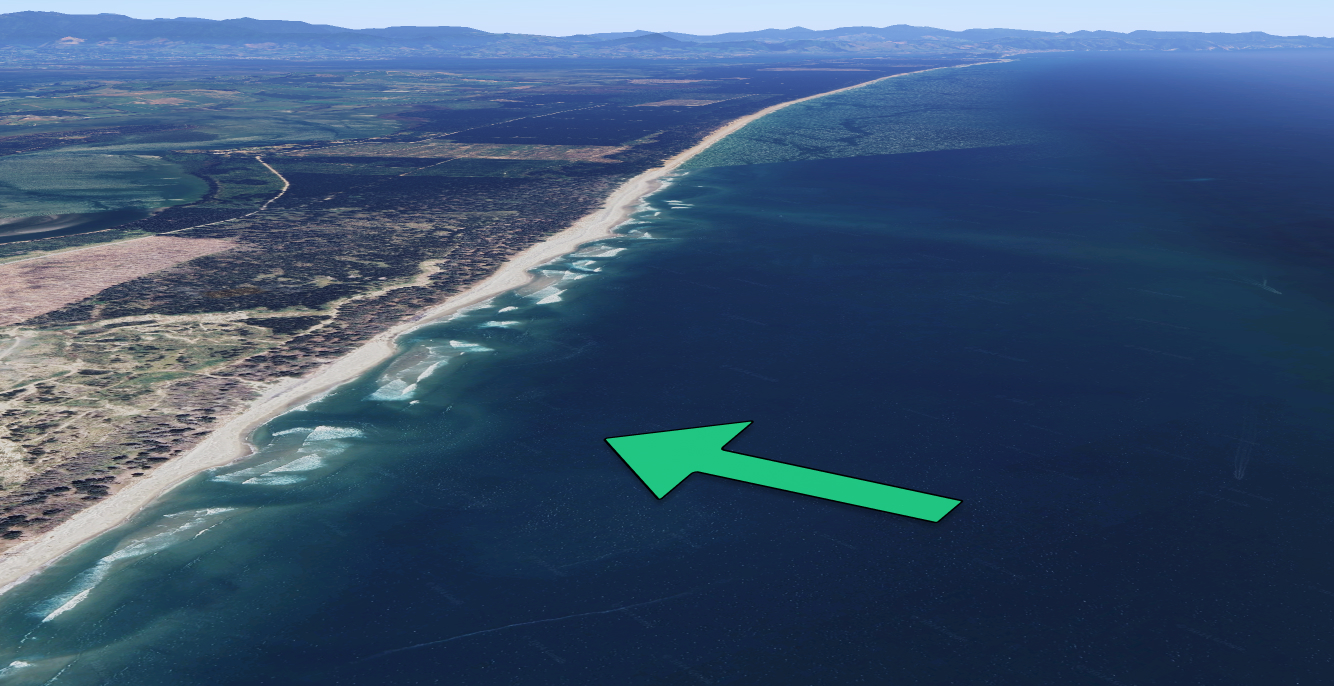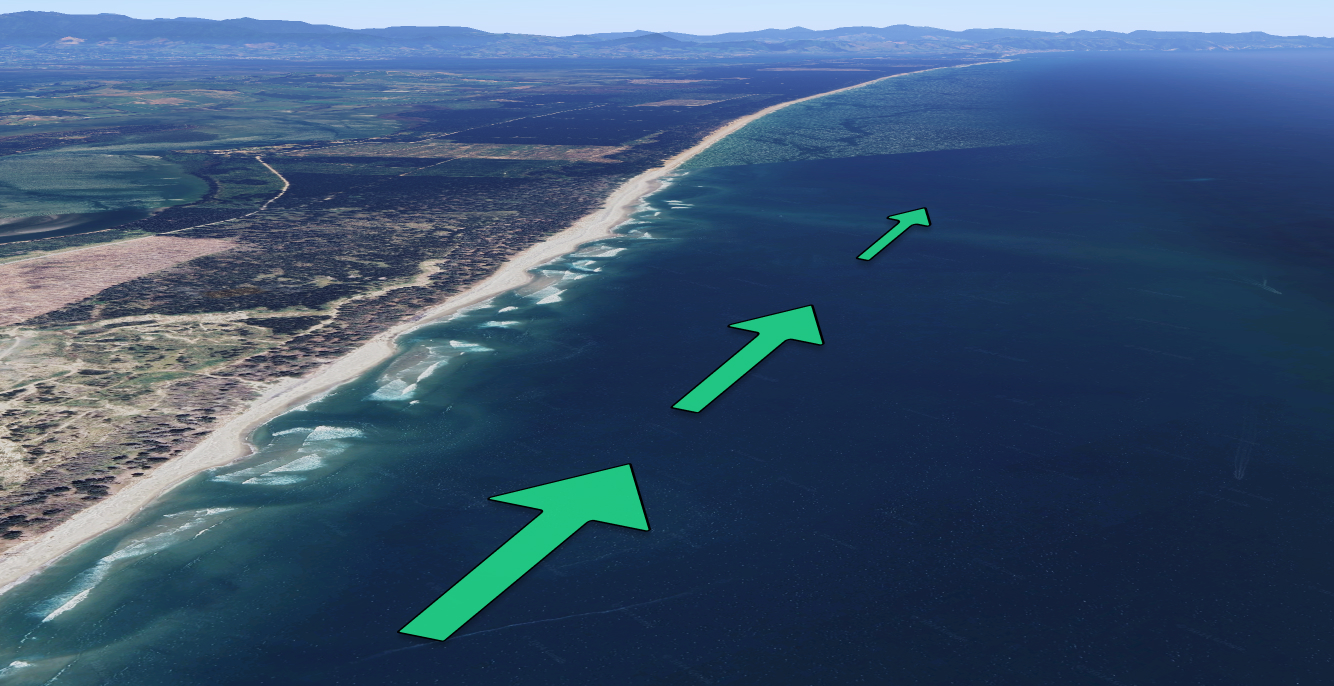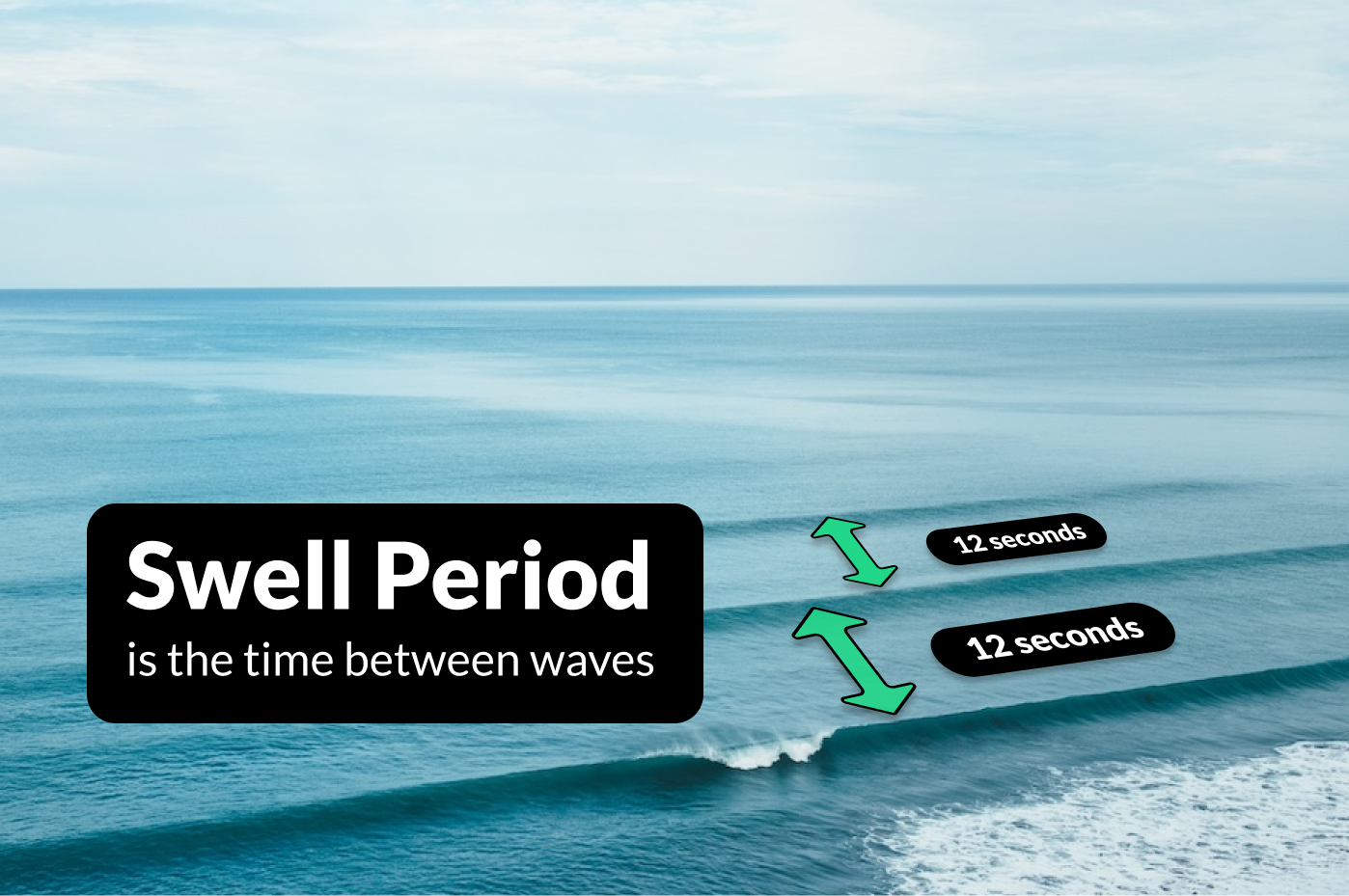How to Read the Surf Forecast Like a Pro
Ever been confused by the surf forecast? Read this before you hit the waves.
February 18, 2025

If you’re new to surfing or just starting out, there’s one important thing you need to do before you pack up your car and head to the beach – check the surf forecast.
But how do you make sense of things like surf height, and what the heck are swell period and swell direction anyway? Here’s what you need to know!
Surf Height
Let’s start with the most important factor: surf height. There are many ways to measure surf height, but the most common way is to measure the height of the face of the wave as seen from the front. You can think of surf height as the vertical distance from the trough (lowest point) to the crest (highest point) of a wave.
For beginners, optimal surf height for learning is in the range of 0.5 to 1.2 metres. Waves in this range are generally manageable, less intimidating, and allow for more control as you learn to paddle, stand up, and ride the wave. Larger waves can look tempting, but they can also be much harder to handle and can make it harder to learn.
Pretty straightforward so far, right?
There’s just one problem: some surf forecasting sites don’t give you surf height, they give you swell height – that is, the height of waves travelling in the open ocean before they break. As you can imagine, what’s happening out in the ocean is vastly different from what happens at your beach.
What's Swell?
The waves you see at your local beach actually originate from something called swell that often comes from hundreds and sometimes thousands of kilometres away. When a swell in the open ocean reaches the shore, it turns into a breaking wave that you can surf, which is what we care about as surfers.
The main reason for the difference between swell height and surf height is the direction of the swell. Imagine two swells at sea with the exact same height. One swell approaches the beach head-on, while the other approaches it from an angle.

When the head-on swell breaks, 100% of its energy will hit the beach, and you’ll get great waves!
But consider the following situation, where the swell is coming from a different direction, running more parallel to the beach:

Sadly, you won’t get any surfable waves from that swell. The swell running parallel to the beach will disappear faster than your workmate who peaked too soon at the office Christmas party.
So! If you don’t want to spend your summer holiday crunching numbers, make sure you’re using a forecasting site that shows you surf height, not swell height. While it is possible to estimate the surf height based on the swell height, it requires deep knowledge of each surf break and complex formulas that take into account the conservation of wave energy.
Swell Period
Lastly, this is one of the most overlooked aspects when you’re looking at the surf forecast. Swell period is the time it takes for consecutive waves to pass the same place.

Mahia, New Zealand. Photo credit: Mathyas Kurmann
Swell periods can range anywhere from five seconds to 25 seconds, or even higher. Larger swell periods are generally better but ‘better’ does depend on your ability level.
The reason longer-period waves are better has to do with the ‘area under the curve’ that you learnt about in calculus and, let’s be honest, forgot just as quickly. Luckily, all you need to remember is that longer-period swells move faster, have more energy, and carry more water when the swell turns into surf and finally breaks.
If you’re a beginner, aim for swell periods in the lower to middle range – somewhere between 8 and 14 seconds.
Waves in this range tend to be less intimidating compared to longer-period waves that can really pack a punch. If the forecast is calling for a swell period of more than 15 or 16 seconds, just be careful. Those waves could be small but mighty!
And that’s all there is to it. Now get out there and use your newfound knowledge to get stoked and catch the sweetest waves every time.
Thanks for reading!